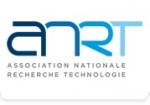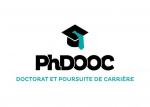Nanobodies targeting mGlu4 as innovative therapeutic tools for autism spectrum disorder
| ABG-133098 | Thesis topic | |
| 2025-08-04 | Other public funding |
- Biology
Topic description
Autism spectrum disorder (ASD) is a neurodevelopmental disorder characterized by persistent impairments in social interaction and communication together with restricted, repetitive behaviors (DSM-5). Its prevalence is increasing. Despite the identification of genetic vulnerabilities and environmental risk factors, its etiology remains insufficiently understood, and pharmacological approaches evaluated to date have not demonstrated clinical efficacy (Satterstrom et al., 2020; Park et al., 2016).
Our work, supported by the literature, strongly implicates the striatum, in particular the nucleus accumbens (NAc), in ASD pathophysiology. The NAc underpins social motivation and reward processing (Fuccillo et al., 2016; Kohls et al., 2013), and its activation by social stimuli is reduced in patients (Pellissier et al., 2018; Supekar et al., 2018), consistent with the social motivation hypothesis (Chevallier et al., 2012). We showed that hyperactivity of striatal projection neurons expressing the D2 dopamine receptor (D2R-SPNs) in the NAc induces social deficits and stereotypies (Le Merrer et al., 2024). Reducing this hyperactivity is therefore a strategic route to restore social behaviors and limit stereotypies.
mGlu4 is a priority target. Its expression is enriched in NAc D2R-SPNs and its activation reduces their hyperactivity. Our data indicate that facilitating mGlu4 with positive allosteric modulators or agonists improves sociability and decreases stereotypies across several animal models (Le Merrer et al., 2024; Becker et al., 2014; Derieux et al., 2022). Beyond homodimers, mGlu4 forms heterodimers with other metabotropic glutamate receptors, notably mGlu2 and mGlu7 (Meng et al., 2022), providing a lever for selective pharmacological modulation.
However, existing chemical compounds targeting mGlu4 are limited by incomplete selectivity, insufficient bioavailability and dose-limiting adverse effects. Moreover, no molecule currently targets mGlu4 heterodimers specifically. Nanobodies, single-domain antibody fragments derived from camelid antibodies, offer a precise alternative to modulate mGlu4 and its heterodimers. Their small size favors tissue distribution, their stability is compatible with prolonged effects and their high specificity limits off-target effects (Bélanger et al., 2019; Gao et al., 2021).
Specific Aims : 1/ Screen pre-existing nanobody (VHH) libraries to identify new candidates that facilitate mGlu4 activity. 2/ Develop nanobodies that specifically target mGlu4-2 and mGlu4-7 heterodimers to map their distribution and modulate their activity without affecting homodimers. 3/ Evaluate and optimize the bioavailability of the selected nanobodies. 4/ Demonstrate in vivo efficacy in two mouse models of ASD, one genetic and one environmental, using a comprehensive behavioral battery.
This project will provide proof of concept that selective modulation of mGlu4 and its heterodimers by nanobodies can relieve patients and will lay the groundwork for a targeted biotherapy for ASD.
Funding category
Funding further details
Presentation of host institution and host laboratory
The Imaging and Brain Unit (iBrain, Inserm Unit 1253) is a multidisciplinary unit integrating research in Psychiatry, studies in cellular/molecular neuroscience and investigations aimed at developing new technologies for diagnosis and treatment of psychiatric disorders (focusing on methodologies relying on radiopharmaceuticals and ultrasound). It gathers experts in acoustics, chemistry, genetics, philosophy, psychiatry, linguistics, medical imaging, mathematics, neuroscience, philosophy, physics and radiochemistry.
Its main objective is to develop personalized therapies for psychiatric disorders, in particular autism and treatment-resistant depression, based on specific biomarkers predicting the efficacy of a given treatment.
The specific objectives of the unit are:
to improve the comprehension of psychiatric and neurologic disorders by refining diagnosis and treatment
to develop new imaging technologies and methodologies for the exploration of brain pathologies
to develop innovative therapies for the treatment of cerebral pathologies
Institution awarding doctoral degree
Candidate's profile
We are looking for a highly motivated PhD candidate with a Master’s level degree in Cellular Biology, Molecular Biology, Pharmacology or Neuroscience. Team working skills and a high degree of initiative and autonomy are also requested.
Vous avez déjà un compte ?
Nouvel utilisateur ?
Get ABG’s monthly newsletters including news, job offers, grants & fellowships and a selection of relevant events…
Discover our members
 ADEME
ADEME  ASNR - Autorité de sûreté nucléaire et de radioprotection - Siège
ASNR - Autorité de sûreté nucléaire et de radioprotection - Siège  Aérocentre, Pôle d'excellence régional
Aérocentre, Pôle d'excellence régional  Ifremer
Ifremer  Nokia Bell Labs France
Nokia Bell Labs France  ANRT
ANRT  Généthon
Généthon  TotalEnergies
TotalEnergies  SUEZ
SUEZ  CASDEN
CASDEN  Tecknowmetrix
Tecknowmetrix  Laboratoire National de Métrologie et d'Essais - LNE
Laboratoire National de Métrologie et d'Essais - LNE  PhDOOC
PhDOOC  ONERA - The French Aerospace Lab
ONERA - The French Aerospace Lab  MabDesign
MabDesign  Groupe AFNOR - Association française de normalisation
Groupe AFNOR - Association française de normalisation  Institut Sup'biotech de Paris
Institut Sup'biotech de Paris  MabDesign
MabDesign  CESI
CESI


